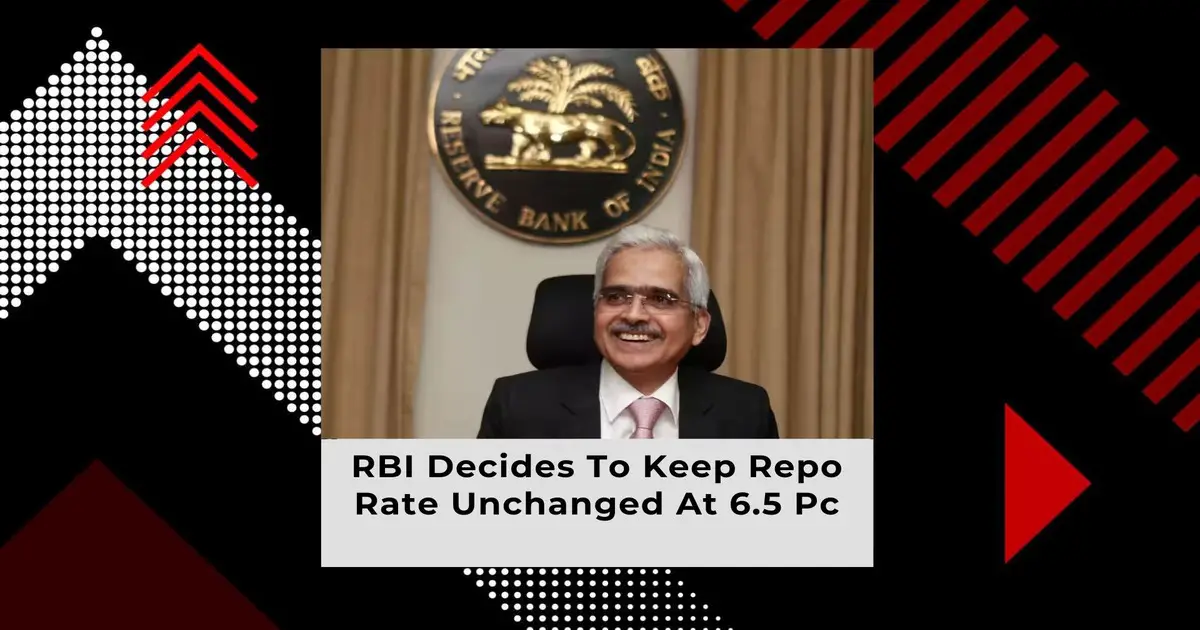The real estate industry applauds the RBI decision to maintain 6.5% repo rates.
By Bricksnwall | 2024-02-09

Experts noted that the Reserve Bank of India's reprieve enhances homeowners' affordability levels and lets them keep taking advantage of low lending rates.
Since most cities have seen increases in housing
prices over the past year, the Reserve Bank of India's decision to maintain the
repo rates at 6.5% has been well-received by the real estate industry. This is
because it allows homebuyers to continue taking advantage of low interest rates
and raises their affordability levels.
For the sixth consecutive occasion, the Reserve
Bank of India decided on February 8 to maintain the policy rate at its current
level. This implies that the equivalent monthly installments for homebuyers
should remain the same. After six rate increases in a row totaling 250 basis
points since May 2022, the rate increase cycle was put on hold in April of last
year.
On February 8, RBI Governor Shaktikanta Das announced the bi-monthly monetary policy, stating that the Monetary Policy Committee (MPC) had chosen to maintain the repo rate at 6.5%.
Additionally, he stated that robust domestic demand
and steady international prospects will likely support the continued resilience
of services sector activity. In January 2024, the PMI services climbed
dramatically, indicating that their strong expansion is still ongoing. It is
anticipated that construction activity will be driven by the strong demand for
residential dwellings as well as rising government capital expenditure.
The RBI's breather provides homebuyers an
advantage.
The policy rate halt is good news for the real
estate industry since it will help sustain the momentum in the residential
market throughout the course of the upcoming year, along with stable interest
rates and better buyer sentiment. As a result, home loan interest rates are
predicted to drop, improving affordability and boosting the market. Sales are
predicted to surpass 300,000 units by 2024, according to Samantak Das, Chief
Economist and Head of Research and REIS, India, JLL.
In 2024, affordability will be second only to 2021 peak affordability levels according to JLL's Home Purchase Affordability Index. He hoped that a future repo rate drop would significantly boost affordability. "With support from the policy ecosystem and a reasonable interest rate regime, this is expected to drive India's residential sales in value terms to over ₹3 lakh crore over the next year, with the potential to double over the next five years."
The action preserves for homebuyers the benefit of
comparatively low interest rates on home loans, according to Anuj Puri,
Chairman of ANAROCK Group.
"If we look at the current trends, the housing market is unstoppable, and the general favorable consumer sentiment will be sustained by home loan rates remaining stable. This reprieve from the RBI is a clear benefit for purchasers, he continued, considering that house prices have increased in all seven of the top cities over the past year.
According to Shishir Baijal, Chairman and Managing Director of Knight Frank India, the country's housing market is experiencing pressure from higher interest rates and rising property prices on the lower segment, even as the mid and premium segments continue to grow. Baijal described this as a "comforting signal for the industry" and said that stability in the interest rate environment is good for the housing market. We think that in the near future, reduced interest rates on home loans would significantly improve the mood of homebuyers and make better affordability possible, which is a very important consideration in this particular housing market segment.
According to Boman Irani, president of CREDAI, the Indian real estate industry is still generally optimistic and hopes that the actions taken by the RBI will further strengthen banks' housing loan portfolios, lower the cost of construction finance and housing loans in the upcoming fiscal year, and maintain the sector's growth.
Source: Business Standard




